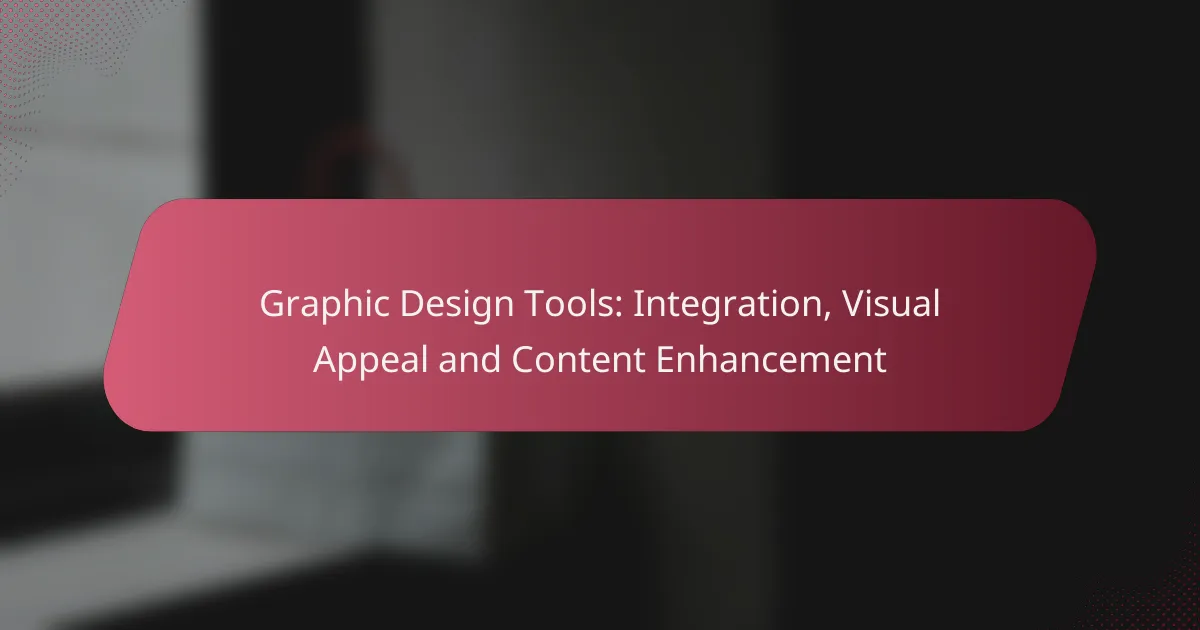In the realm of graphic design, the right tools can significantly enhance both workflow and visual appeal. By integrating seamlessly with other applications, these tools not only streamline collaboration but also empower designers to create captivating content that effectively communicates their messages. Prioritizing usability and access to essential features is crucial for achieving high-quality design outcomes.
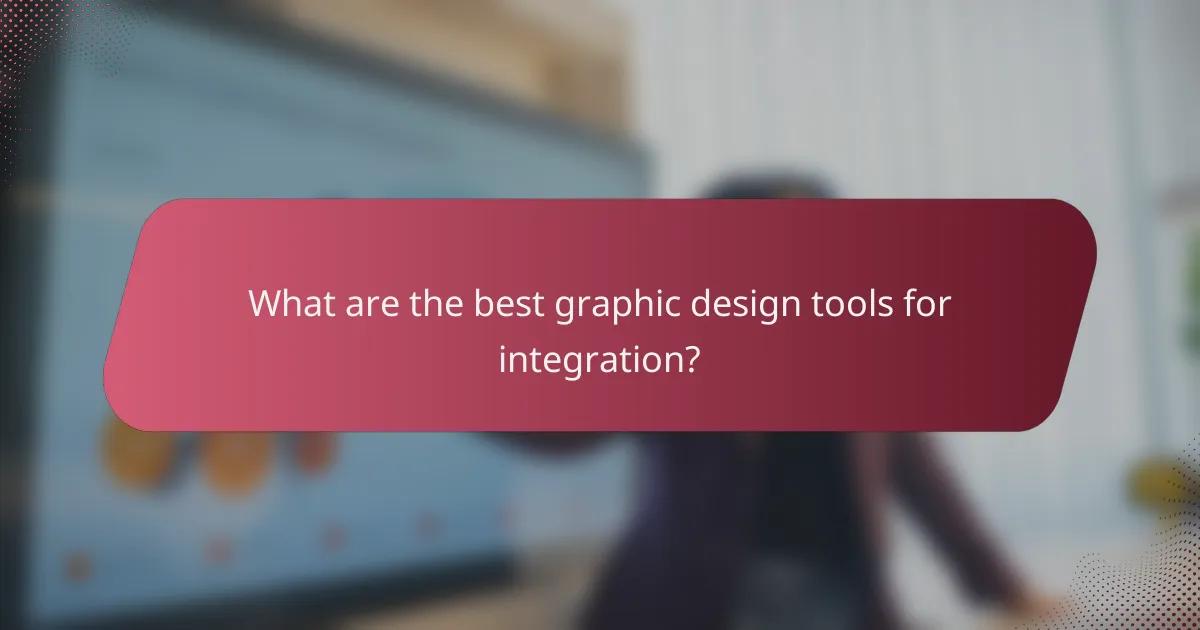
What are the best graphic design tools for integration?
The best graphic design tools for integration are those that seamlessly connect with other applications and platforms, enhancing workflow efficiency. These tools allow designers to create visually appealing content while easily collaborating with team members and managing assets.
Adobe Creative Cloud
Adobe Creative Cloud is a comprehensive suite that includes tools like Photoshop, Illustrator, and InDesign, all of which integrate well with each other and third-party applications. This integration facilitates a smooth workflow, allowing designers to move assets between programs effortlessly.
Consider using Adobe Creative Cloud for projects that require advanced features and high-quality outputs. However, be aware of the subscription costs, which can range from around $20 to $80 per month depending on the plan and tools selected.
Canva
Canva is a user-friendly graphic design tool that offers a range of templates and design elements, making it ideal for quick projects. It integrates with various platforms like social media and email marketing tools, allowing users to publish directly from the app.
For teams needing a collaborative environment, Canva’s shared folders and real-time editing features are beneficial. The free version offers a solid range of features, while the Pro version, priced around $12.99 per month, unlocks additional functionalities.
Figma
Figma is a web-based design tool that excels in collaborative design projects. Its real-time editing capabilities allow multiple users to work simultaneously, making it perfect for teams spread across different locations.
Figma integrates well with other tools like Slack and JIRA, streamlining communication and project management. The free version is suitable for individual users, while team plans start at about $12 per editor per month.
Sketch
Sketch is a vector-based design tool primarily used for web and mobile app design. It offers robust integration with plugins and third-party applications, enhancing its functionality and allowing for customized workflows.
While Sketch is only available for macOS, its focus on UI/UX design makes it a favorite among designers in that field. The software is available for a one-time purchase of around $99, with annual renewals for updates.
Affinity Designer
Affinity Designer is a cost-effective alternative to Adobe products, offering powerful vector and raster design capabilities. It supports integration with other Affinity apps, such as Affinity Photo and Affinity Publisher, creating a cohesive design environment.
With a one-time purchase price of approximately $54.99, Affinity Designer provides a budget-friendly option for freelancers and small businesses. Its user-friendly interface and extensive features make it suitable for various design projects.
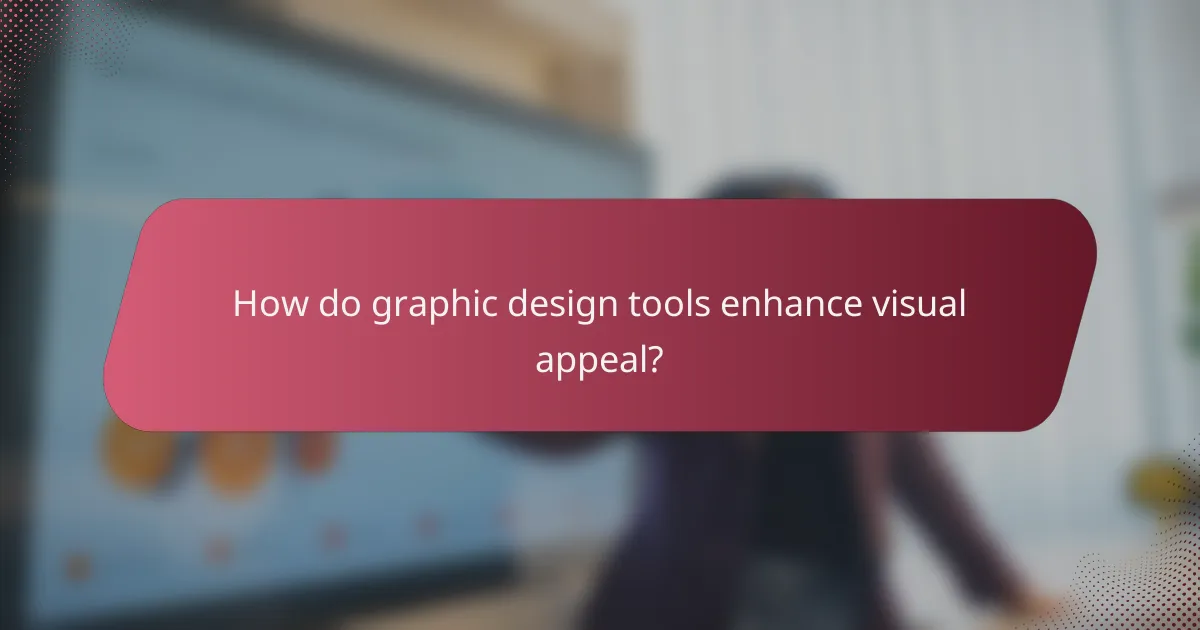
How do graphic design tools enhance visual appeal?
Graphic design tools enhance visual appeal by providing features that allow users to create aesthetically pleasing and engaging designs. These tools facilitate the application of design principles such as color theory, typography, and image editing, which are essential for capturing attention and conveying messages effectively.
Color theory applications
Color theory applications in graphic design tools enable users to choose color schemes that evoke specific emotions and responses. Tools often include color wheels, palettes, and harmony suggestions to help designers select complementary colors that enhance visual impact.
For example, a tool might suggest a triadic color scheme for a vibrant look or an analogous scheme for a more harmonious feel. Understanding color psychology can further guide choices, such as using blue for trust or red for excitement.
Typography features
Typography features in graphic design tools allow for the selection and manipulation of fonts to improve readability and aesthetic appeal. Users can adjust font size, spacing, and weight to create a hierarchy that guides viewers through the content.
Choosing the right typeface is crucial; for instance, serif fonts often convey tradition and reliability, while sans-serif fonts are seen as modern and clean. Many tools provide access to extensive font libraries, enabling designers to find the perfect match for their projects.
Image editing capabilities
Image editing capabilities within graphic design tools empower users to enhance photos and graphics to fit their design needs. Features such as cropping, resizing, and applying filters allow for quick adjustments that can significantly improve the overall look of a design.
Additionally, advanced tools may offer options like layer management, masking, and blending modes, which enable intricate edits. Understanding the basics of image resolution and file formats is essential for maintaining quality across different mediums.
Template customization options
Template customization options in graphic design tools provide a starting point for users to create unique designs quickly. Many tools offer pre-designed templates for various formats, including social media posts, brochures, and presentations, which can be tailored to fit specific branding needs.
When customizing templates, it’s important to maintain brand consistency by using the same color schemes, fonts, and logos. This approach not only saves time but also ensures a cohesive visual identity across different platforms.
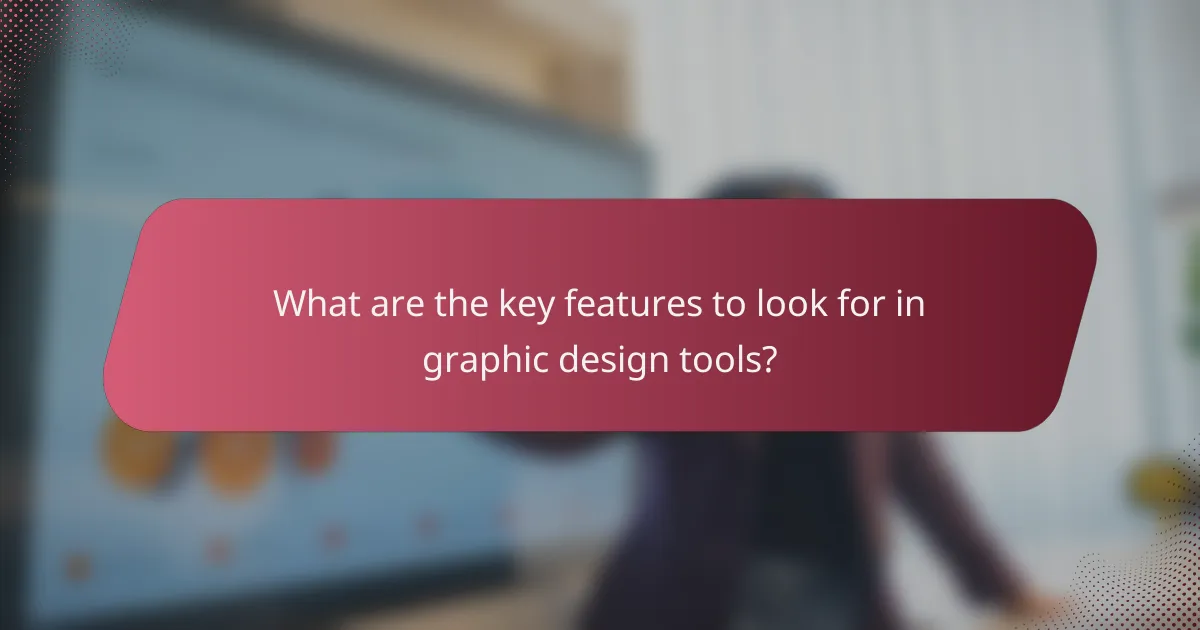
What are the key features to look for in graphic design tools?
When selecting graphic design tools, prioritize features that enhance usability, collaboration, integration, and access to assets. These elements significantly impact the efficiency and quality of your design projects.
User-friendly interface
A user-friendly interface is crucial for both beginners and experienced designers. Look for tools that offer intuitive navigation, clear icons, and customizable layouts to streamline your workflow. A well-designed interface can reduce the learning curve and increase productivity.
Consider tools that provide tutorials or onboarding guides to help users quickly adapt. Features like drag-and-drop functionality and customizable toolbars can further enhance usability, making the design process smoother.
Collaboration features
Collaboration features are essential for teams working on graphic design projects. Tools that allow real-time editing, commenting, and version control facilitate seamless teamwork. This ensures that all team members can contribute and provide feedback efficiently.
Look for options that integrate with communication platforms like Slack or Microsoft Teams, which can enhance collaboration. Additionally, features that allow sharing designs via links or export options can simplify the review process.
Integration with other software
Integration with other software is a key feature that enhances the functionality of graphic design tools. Ensure the tool can connect with popular applications such as Adobe Creative Suite, project management tools, or cloud storage services. This connectivity allows for a more streamlined workflow and reduces the need for manual file transfers.
Consider tools that support APIs or plugins, which can extend their capabilities and adapt to your specific needs. This flexibility can save time and improve overall efficiency in your design projects.
Asset libraries
Access to extensive asset libraries can significantly enhance your design work. Look for tools that offer built-in libraries of templates, stock images, icons, and fonts. This feature can save time and provide inspiration, allowing you to focus on creativity rather than sourcing materials.
Some tools also allow users to upload and organize their own assets, which can be beneficial for maintaining brand consistency. Ensure that the asset library is regularly updated to provide fresh content and resources for your projects.
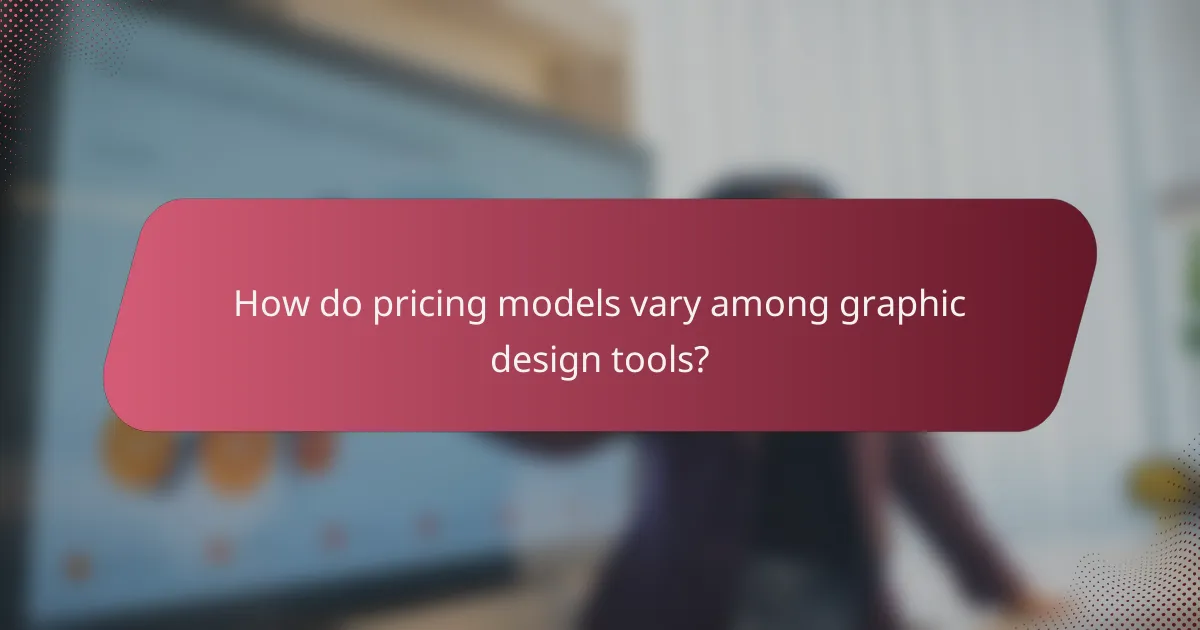
How do pricing models vary among graphic design tools?
Pricing models for graphic design tools can differ significantly, impacting how users access and pay for these resources. Common models include subscription-based pricing, one-time purchases, free trials, and educational discounts, each offering unique benefits and considerations.
Subscription-based pricing
Subscription-based pricing is a popular model where users pay a recurring fee, typically monthly or annually, to access the software. This model often includes regular updates and customer support, making it appealing for those who want the latest features without additional costs.
Prices for subscriptions can range from around $10 to $50 per month, depending on the tool and its capabilities. Users should consider their long-term needs and whether they will use the tool consistently to determine if this model is cost-effective.
One-time purchase options
One-time purchase options allow users to buy graphic design software outright, providing lifetime access without ongoing fees. This can be advantageous for those who prefer not to commit to recurring payments.
Prices for one-time purchases can vary widely, often falling between $100 and $500. However, users should be aware that this model may not include future updates or support, which could lead to additional costs down the line.
Free trial availability
Many graphic design tools offer free trials, allowing users to test the software before making a financial commitment. These trials typically last from a week to a month, giving users a chance to evaluate the tool’s features and usability.
Taking advantage of free trials can help users make informed decisions about which tool best meets their needs without any initial investment. However, it’s essential to check the trial’s limitations, such as feature restrictions or watermarked outputs.
Educational discounts
Educational discounts are often available for students and teachers, providing significant savings on graphic design tools. These discounts can range from 10% to over 50%, making professional software more accessible to those in academia.
To qualify for these discounts, users typically need to provide proof of their educational status, such as a student ID or enrollment verification. This model encourages learning and skill development in graphic design without the burden of high costs.
